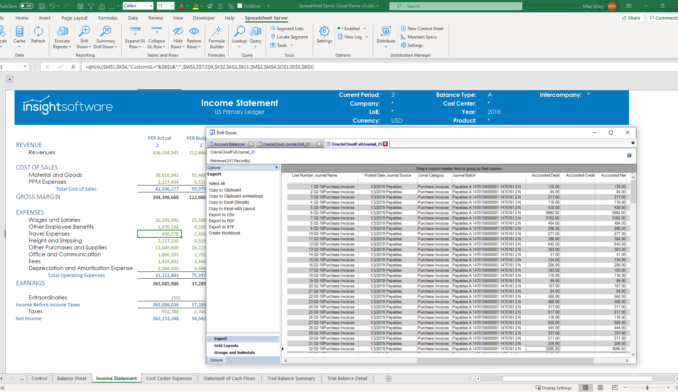Oracle OpenWorld 2016: The Cloud Has No Limits
Last week, we made our tenth consecutive trip to San Francisco for Oracle OpenWorld, the world’s largest conference for Oracle customers and technologists. The event, which has ballooned in attendance from 50 in 1982 to 50,000 in recent years, was once again a great opportunity to learn about forthcoming Oracle technologies, as well as the challenges and needs of Oracle users.
Head in the Cloud(s)
Revenue from Oracle’s two fastest-growing cloud businesses—software as a service (SaaS) and platform as a service (PaaS)—rose 77 percent in Q1 to $798 million, so the Cloud was this year’s dominant topic, as in years past. However, Oracle’s messaging indicates a shift from trying to get all customers to use one public SaaS to now offering alternative Cloud offerings to meet customers’ requirements.
There are three main Oracle Cloud deployment models with various service types (SaaS, PaaS, etc.). These models are Public (applications, platform, and infrastructure through the internet); Private (hosted behind customer firewall); and Hybrid (most popular, runs across Public and Private Clouds). New offerings include:
- Oracle Public Sector Cloud: This portfolio of SaaS, infrastructure as a service (IaaS), and PaaS products adheres to many international government security standards.
- Cloud@Customer: Oracle Cloud Machine offers enterprises a Private Cloud implementation with a Public Cloud subscription model, ensuring organizations can still conform to regulatory, privacy, and legal frameworks.
- Oracle Cloud ERP for Brazil: Oracle Enterprise Resource Planning Cloud localized for Brazilian regulations and the Portuguese language.
- Oracle Revenue Management Cloud: This application ensures compliance with the forthcoming ASC 606 /IFRS 15 standards starting in January 2018. It won’t be backported into Oracle E-Business Suite, but integrates seamlessly with it together with Oracle Financials Cloud and robust integration with other third parties.
Thunderclouds on the Horizon?
If there is competitive thunder to be heard, it’s not coming from SAP, who Oracle rarely meets in the SaaS ERP Cloud space. The other prominent player, as described by Oracle Chief Technology Officer Larry Ellison, is Workday. On the IaaS side, it is Amazon Web Services (AWS).
Still, Ellison noted, Oracle has 2,800 Cloud ERP customers in 90 countries, which is 10 times that of Workday. Also, Oracle closed 344 new ERP cloud customers in Q1 alone, which are more ERP customers than Workday has sold to in its history.
In the IaaS space, Ellison said Amazon’s lead is “over,” and that Oracle’s next generation IaaS delivers twice the computing power and memory, four times the storage, and 10 times the input/output speeds at lower cost (on average 20% cheaper).
From the Ground: Exhibit Floor Talk
Just as with this spring’s COLLABORATE 16 Oracle Applications Users Group conference, the demise of Oracle Business Intelligence Discoverer for reporting was a hot topic among Oracle OpenWorld attendees visiting our booth. Many were interested in subledger reporting and, in particular, how to convert their existing Discover reports to another format, like Excel-based reporting. Converting Oracle FSGs to Excel-based reporting also remains a consistent conversation.
Other topics peaking customer curiosity were related to ad hoc reporting, as well as Supply Chain and Human Resources reporting and an easier way to mass load GL Journals. Distribution of reports, especially based on Oracle Groups/Role, was also the focus of many questions.
Ready to learn more? Request a free demo to discover how insightsoftware helps simplify Oracle reporting.







